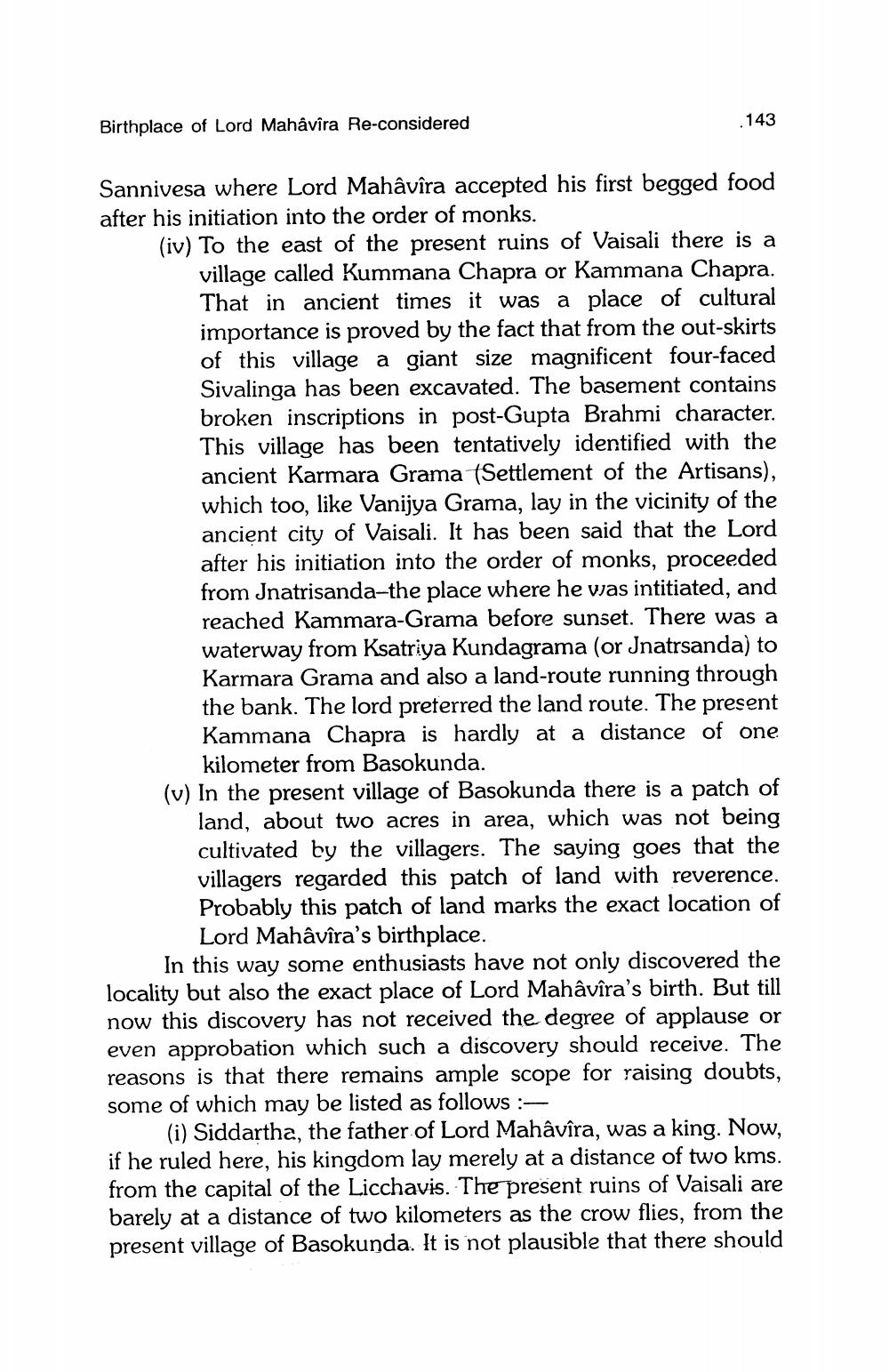________________
Birthplace of Lord Mahavira Re-considered
.143
Sannivesa where Lord Mahâvîra accepted his first begged food after his initiation into the order of monks. (iv) To the east of the present ruins of Vaisali there is a
village called Kummana Chapra or Kammana Chapra. That in ancient times it was a place of cultural importance is proved by the fact that from the out-skirts of this village a giant size magnificent four-faced Sivalinga has been excavated. The basement contains broken inscriptions in post-Gupta Brahmi character. This village has been tentatively identified with the ancient Karmara Grama (Settlement of the Artisans), which too, like Vanijya Grama, lay in the vicinity of the ancient city of Vaisali. It has been said that the Lord after his initiation into the order of monks, proceeded from Jnatrisanda-the place where he was intitiated, and reached Kammara-Grama before sunset. There was a waterway from Ksatriya Kundagrama (or Jnatrsanda) to Karmara Grama and also a land-route running through the bank. The lord preferred the land route. The present Kammana Chapra is hardly at a distance of one
kilometer from Basokunda. (v) In the present village of Basokunda there is a patch of
land, about two acres in area, which was not being cultivated by the villagers. The saying goes that the villagers regarded this patch of land with reverence. Probably this patch of land marks the exact location of
Lord Mahâvîra's birthplace.
In this way some enthusiasts have not only discovered the locality but also the exact place of Lord Mahâvîra's birth. But till now this discovery has not received the degree of applause or even approbation which such a discovery should receive. The reasons is that there remains ample scope for raising doubts, some of which may be listed as follows:
(i) Siddartha, the father of Lord Mahâvîra, was a king. Now, if he ruled here, his kingdom lay merely at a distance of two kms. from the capital of the Licchavis. The present ruins of Vaisali are barely at a distance of two kilometers as the crow flies, from the present village of Basokunda. It is not plausible that there should




